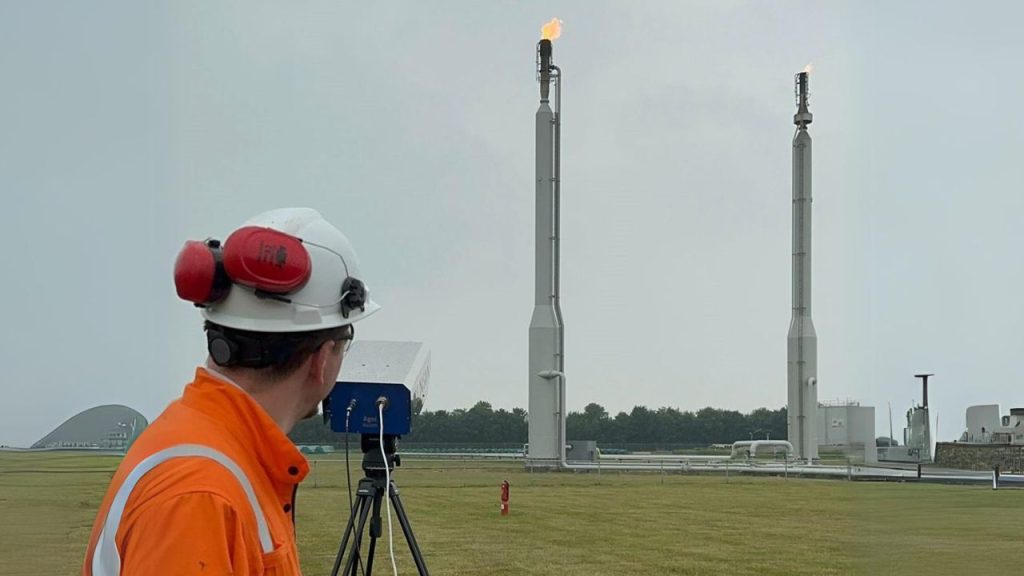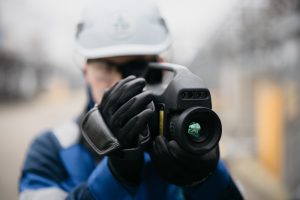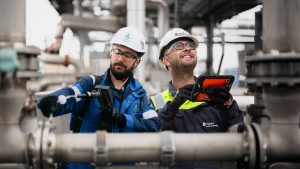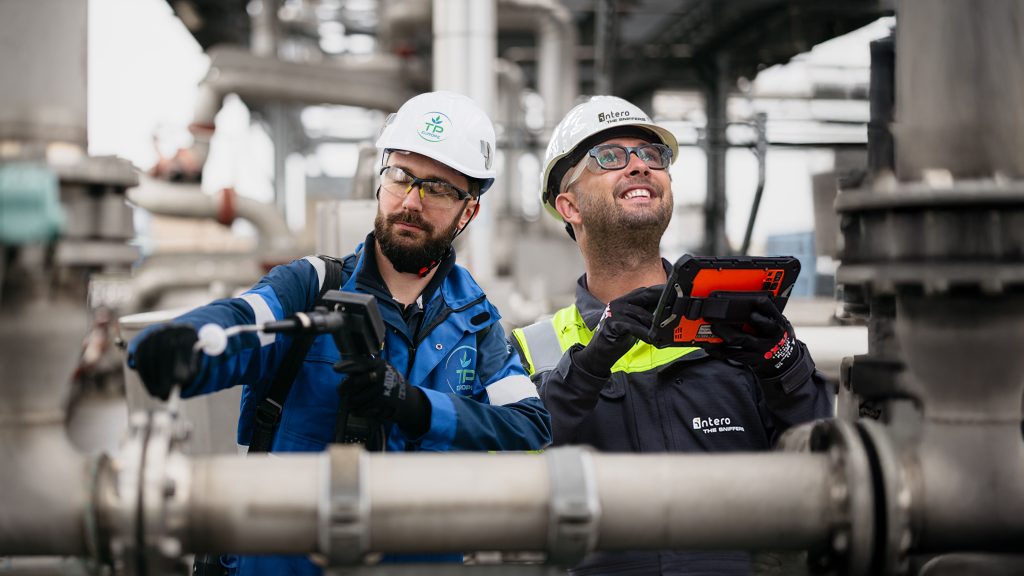The efficiency of flare combustion processes is important for industrial operations, environmental protection, and Legal obligations. As an environmental engineer with over 15 years of working in the petrochem corporate environment, I have seen how tools for measurement were changed and moreover, how they helped to improve the operating flare efficiency. This well written guide will reveal as well the components accessible flare combustion efficiency measuring techniques and newer technologies available in the field today.
In the past, in the given field of my activity, I had to interact quite a lot with regulatory, industrial and academic partners with various aspects to develop and deploy novel flare management tools. This experience has allowed me to look deeply into this area and understand its pains and gains. Let’s enter the flare combustion efficiency domain and see how it can be properly measured and why is it important for the industries along with the environment.
What is flare combustion efficiency and why is it important?
Combustion efficiency is the proportion of the uncollected waste gases that are combusted in a flare. This is a very important parameter which determines the effectiveness of a flare in eliminating potentially harmful pollutants. Without combustion efficiency, a high percentage of waste gases that includes any pollutants is released in the atmosphere in form of less toxic gases.
What is more, flare combustion efficiency is very crucial. It is not only a matter of compliance with the standard but also of environmentally sound pollution control, and the public health of molecule-centric communities. In our experience, facilities that are committed to achieving high combustion efficiencies tend to go beyond compliance to the level of achieving better public relations and lower operating costs.
How does flare combustion efficiency impact environmental regulations?
In recent years environmental regulations have begun to put more emphasis on flare performance and the combustion efficiency is a major focus. The EPA for example has developed some flaring limits and procedures that most flares are required to have an efficiency greater than 96.5 % (EPA, 2016). Such a regulatory framework’s adoption has led to a remarkable advancement in flare design and tracking technology.
For example, in my experience with different regulatory agencies, there is an inclination for monitoring requirements to be more detailed and more frequent. For example, the continuous monitoring of flare combustion efficiency is required for the potential lot of refineries by the EPA’s Refinery Sync Rule which was put into effect in 2015. This change has triggered the revolution of the measurement technologies and the methods of data processing.
What can be the outcome of a low combustion efficiency of the flare resulted in?
Moreover, low flare combustion efficiency has far-reaching effects especially in terms of environmental and economic negative implications. Ineffective and inefficient burning of flares emits partially burned hydrocarbons and other harmful materials into the air. Such emissions are conducive to an increase of air pollution by contributing to the smog and increasing the presence of greenhouse gases.
Which measurement techniques are considered industry standards?
The industry relies on several standard techniques for measuring flare combustion efficiency. These methods have been refined over decades and form the backbone of regulatory compliance strategies. However, it’s crucial to understand their strengths and limitations to ensure accurate assessments.
How does the EPA Method 22 work for visual emissions?
EPA Method 22 is a visual observation technique used to detect visible emissions from flares. It requires trained observers to monitor the flare for a specified period, typically 5 minutes, and record the presence or absence of visible smoke. While this method is relatively simple and cost-effective, it has limitations in accurately quantifying combustion efficiency.
I’ve trained numerous operators in Method 22 procedures, and I always emphasize the importance of consistency and attention to detail. Even subtle changes in lighting conditions or observer positioning can affect results. To enhance the reliability of Method 22 observations, many facilities now use video recording systems for continuous monitoring and retrospective analysis.
What is the principle behind EPA Method 21 for leak detection?
EPA Method 21 has been developed primarily for leak detection, though interesting data about flares’ functioning can also be acquired with this method. This procedure makes use of portable instruments that are capable of assessing the degree of volatile organic compounds (VOCs) emissions from specific leak points like flare tips.
In my work implementing Method 21 programs, I have come to appreciate that periodic surveys help in foreseeing problems and mitigating their capacity to evolve into bigger challenges. For example, high concentrations of VOC compounds around the flare tip, suggest possible efficiency loss due to a poor combustion process or mechanical failure within the flare system.
| Measurement Technique |
Advantages |
Limitations |
| EPA Method 22 |
Simple, cost-effective, widely accepted |
Subjective, limited quantitative data |
| EPA Method 21 |
Detects leaks, provides quantitative data |
Point measurements, labor-intensive |
What are the effects of advanced optical techniques on the measurement accuracy?
The employment of advanced optical techniques has been a breakthrough invention in flare combustion efficiency measurement procedures and has provided maximum extensiveness and real time in the flare monitoring methods available today. These analytical techniques utilize the method of spectroscopy to measure the constituents flare emissions so as to make better evaluation of the efficiency of combustion.
As I have mentioned during the branch, there has been a movement from taking samples at intervals using manual methods to continuous optical monitoring. And this continued transition increased not only the quality of data obtained but also swift actions to the problem at hand. Let’s delve into two major optical methods of operation that have become commonly practiced in the field….
What are the benefits of particular FTIR spectroscopy to flare monitoring?
The method has been developed for flare monitoring features of Fourier transform infrared spectroscopy. This is a method run by measuring the infrared radiation absorbed in a flare and provides quantitative information about several chemical components. Apart from that, FTIR systems are capable of applying their Spectrometry for the factors such as real time determination of the combustion efficiency and the composition of the unburned hydrocarbons.
I have actively participated in the implementation of several FTIR techniques, and those turned out to be fruitful. In one of the instances, a petrochemical plant managed to improve its average flare combustion efficiency from 96% to 98.5% just by employing FTIR data on flare optimization. This improvement not only allowed for the environmental regulations on the efficiency of thermal oxidizers to be satisfied, but also led to a dramatic decrease in greenhouse gas emissions.
What is the contribution of GC-FID to determining the efficiency of combustion processes?
Gas Chromatography with Flame Ionization Detection (GC-FID) is another advanced technique dedicated to the measurements of the flare combustion efficiency. Since this technique is also able to quantify each hydrocarbon present in the flare association, there is comprehensive information of the composition of unburnt hydrocarbons present in the flare gas.
From my observation, GC-FID systems are extremely useful in complicated working flares aspect including flares treating multiple streams of waste gas. I can think of a project where GC-FID analysis showed up very small quantities of some highly reactive compounds which were responsible for combustion instability at times. Now, by compromising such factors, the plant was consistently able to sustain high combustion efficiency leading to low emission in general.
To show how these advanced techniques have progressed, here are some of the enhancements in flare performance monitoring that I have noticed:
- Increased measurement accuracy: From conventional ± 5% to optical technique ±1%
- Enhanced detection limits: ability to detect trace compounds at parts per billion ppb
- Faster response times: from measuring and reporting every hour or daily to continuous real time monitoring
- Improved operational insights: clearer unburned hydrocarbons speciation for process optimization
With these advanced techniques we are measuring the flare efficiency in a very aggressive way, soon these technological methods will become vital for environmental compliance and operational excellence. Progressing from the use of visual observations to detailed representation of heat distribution is a testament to the industries resolve to change continuously while taking care of the environment.
What contribution do thermal imaging cameras have in flare monitoring?
Thermal imaging cameras have made it possible to change the trend of flare monitoring in terms of combusting efficiency. These high-grade hi-tech gadgets have been able to monitor heat and thus in some instances detecting problems that cannot be seen. As one who has installed thermal imaging systems in a number of facilities, Am proud of how these systems have positively changed flare management practices.
Envision for a moment: what you cannot see is right where you are. This is exactly what thermal imaging cameras do for flare monitoring. They take heat signatures and draw images in colors and pictures showing where the flame or combustion is more effective. However, how do these critics in the overcast skies help us get adequate performance from the flares? They will investigate these more closely.
How and Why do Thermal Picture Cameras Detection Combustion Inefficiency?
Thermal cameras are used as the wen-gues to the flare systems since they stay helping in flare systems looking for biomass waste heat eliminator system inherent inefficiency. This is one of the simplest principles but one of profound importance: any object with the temperature of more than 0 degrees Kelvin is producing an infrared emission. So thermal cameras make the heat maps by looking for the emissions from the flares and seeing hot and cold spots.
In most cases, thermal imaging is most useful in detecting incomplete combustion. A well operating flare should have a constant high temperature profile. Any deviations in this trend, such as cool spots, could mean that hydrocarbons are escaping in the form of fumes instead of being completely combusted at the flare. For example, I had once seen using a thermal camera, a small area at the edge of the flare that still remained cold after lighting up the flare. This made us probed further and we found the burner tip was partially clogged and creating a small area of poor combustion. Such issues would have taken weeks to notice if there was no use of the thermal camera which would result to excessive emissions through the flare hence trouble with the authorities.
What are the limitations of thermal imaging in flare analysis?
Thermal imaging, coupled with digital or infrared cameras is quite effective in flare assessment, but the system is also subject to limitations. Understanding these limitations is important to minimize or eliminate the pitfalls in data interpretation for more efficient monitoring of the flare. There are some limitations for example measuring chemical constituents is not possible. Thermal imagers pair with some limitation, thermal imagers can tell us where flares maybe incomplete but not what substance is coming out from combustion.
Secondly, I have come across environmental interference as a challenge. Environmental constraints such as ambient temperature, wind conditions, and moisture also help gauge thermal readings. There was one time that I will never forget in which a quick exposure to rain would cause an upheaval of our thermal imaging system making it impossible for us to see the actual condition of the flare at that point in time. The way to reduce these effects is to apply thermal imaging in conjunction with other measurement methods as a part of the holistic monitoring approach.
How can CEMS be used better in the case of flares?
Indeed, Continuous Emissions Monitoring Systems (CEMS) are the tools in the arsenal that aids in performance measurement bringing about efficiency by recording emissions from the flare and combustion performance at all levels. What is necessary in this case for the optimization of flare components is the appreciation of the knowledge of the regulatory practices and their strengths and weaknesses as far as flare operations are concerned. It’s like tuning an instrument that plays many gases and flames in total emission geometry.
Over the span of my career, I have witnessed the CEMS technology being seasoned, from the simplest of devices – smoke detectors, into multi-component analyzers. The optimization can be found only when the three criteria – accuracy, reliability and costs – are taken into account. But what constitutes an effective flare CEMS, and how do we go about designing one so that it is effective on an operational and a regulatory level?
What are the salient factors for the success of a flare CEMS?
When you think of an effective flare CEMS, think of it as an orchestra where all the parts must each contribute towards performing the emission monitoring and reporting tasks. At the core of the system most times you will find:
- Gas analyzers (e.g., FTIR, GC-FID) for measuring specific compounds
- Flow meters to monitor gas volumes
- Recording equipment for real-time measurement
- Integrity equipment for data quality assurance
- Compliance equipment for reporting
One of the most critical components I have seen is the sampling and conditioning unit. Flare gases can be hot, aggressive and dirty. A good sample handling system makes sure that the gas that goes to the analyzers is well representative and that the parts will not be harmed by the gas provided. For instance, in one project I was involved in, we used a multi – stage cooling and filtration system which increased the lifespan of our analyzers by over 50% reducing down time and hence cutting overhead costs associated with maintenance.
What factors inform the choice of materials in the CEMS design for the flares?
Regulatory requirements are the other architects of CEMS design. It involves all facets, from the type of components to be used and where to report the data. In the United States the basic regulatory guidelines for monitoring flares are attached in the EPA’s 40 CFR Part 60 and Part 63, the guidelines prescribe particular measurement parameters, levels of accuracy and measures on how often the measurements should be carried out.
These regulatory requirements can be a hurdle and bane or an advantage and opportunity for creativity. For, example, the demand for net heating value real-time monitoring of the combustion zone led to the advent of fast response calorimeters. In one such pilot project where I was involved in testing new devices, minutes-waiting time was reduced a game-changing improvement to seconds for flare response.
| Regulatory Requirement |
CEMS Design Implication |
Potential Optimization Strategies |
| 15-minute block averages for key parameters |
High-frequency data acquisition |
Implement edge computing for real-time processing |
| 98% uptime requirement |
Redundant systems and robust design |
Predictive maintenance using AI algorithms |
| Quarterly accuracy audits |
Built-in calibration and verification systems |
Automated daily micro-audits to ensure continuous accuracy |
Which of the scientific and sociotechnical innovations has a considerable promise for flare efficiency measurements as a residue from future combustion activities?
From the available literature, some introduction would confirm that the measuring scope of flare efficiency has always been unlimited due to new technologies that come up sooner or later. Being a person who has always been somewhat of looking very forward, these up and coming technologies are very thrilling to me. These are not simply enhancements, but are transformational strategies that can lead to new flare management strategies.
However, what these technologies are, and their application to flare systems management in the near future, are those many that are web based design. One of the most promising directions is the area of artificial intelligence and flare efficiency measurements.
In what ways can this new technology alter your practice of flaring and its monitoring to improve efficiency?
The primary advantage of Artificial Intelligence (AI) and Machine Learning (ML) is that it converts flare monitoring from a passive follow up activity to a proactive focus. Such technologies are capable of examining the huge amounts of collected data in a short time to observe trends that would be escalated to the likelihood of them being a potential problem. It s like having someone stand by the flare systems at all times; and not just any someone but the smartest observer who knows everything.
I had the opportunity to engage in a pilot project focused on the introduction and implementation of an AI-based flare monitoring system. The outcomes were quite astonishing. The system was able to:
- Forecast and hence avert combustion catastrophes for as long as thirty minutes within the process employed by most FSSOs.
- Experiment with the optimum rates of assist gas flow with an improvement rate of usable gas through combustion by 15 ratio to gas flows so as to consume less gas overall.
- Aided in realizing weak dependencies that might exist between process parameters and the flare performance which escaped the attention of human analysts.
One incident that stood out, however, took place when there was a sudden process upset. AI registers a new flare activity of somewhat lower accuracy and warns against deflector deployment without an increase in steam flow. This was followed by a Fulcrum recommendation that the rate of steam flow be increased. How could this be detected so early? Future practice clearly emerges how AI will not only question and enhance our monitoring capability but even how quickly and accurately we are likely to act to changing events.
What steps can be taken to guarantee correct and dependable measurements?
These and other measurement control tools are especially relevant in flare efficiency monitoring, as it is crucial to avoid human error. This task concerns not only raising a specific technology but adopting a comprehensive strategy involving properly chosen equipment, maintenance rules, data checking and improvements. Think of it as building a fortress of data integrity, where every practice that defends the correctness of your measurements is the wall, a stone in it.
Most often, the organizational problems connected with accuracy of measurements are due to the negligence towards details perceived to be trivial. Nevertheless, no such element in flare monitoring is disregarded as unimportant. All those details matter. So, what are the key best practices that are responsible for, or perhaps undermine your measurement accuracy? And how frequent should you be taking such measurements to track the effectiveness of your flare at all times?
How often should the quantification method for flare combustion efficiency be carried out?
The issue of frequency for taking flare combustion efficiency measurements is one relating to trustworthiness of data against operational practicality. Usually, the bare minimum is determined by the law, however in many cases I have seen the highest performing facilities exceed those limitations. This stems from how they approach flare monitoring, as an ongoing function rather than being conducted at set intervals.
For best operation and compliance, I would envisage the following measurement frequencies:
- Continuous: Used CEMS to continuously monitor in respect to the most important vent gas parameters like flow rate and composition.
- Hourly: Check graph trend data and look simply at things.
- Daily: Crosscheck and tune operating measurements
- Weekly: Conduct burning efficiency tests and appliance performance analysis.
- Monthly: Verification of measurement and measurement practices by other servicemen.
I used to participate in a project, in which the measurement frequency increased from once/week to continuous. The benefits were astounding and instantaneous. They found it easy to plug the little leaks before they became leaks, which led to a 30% decrease of emission events categorised as reportable, over the range of a year. This is a real eye-opener because in matters of flare operational efficiency, the issue of ‘knowledge is power’ really holds true.
What elements do you expect to enhance the monitoring of efficiency in your flare combustion?
As we conclude the discussion on the flare combustion efficiency measurement approaches, it is perhaps the most important time to capture the all-encompassing information in just a few points. These key points are in turn the summary of years of experience, many hours of monitoring and the lessons learned from above not only the successes but the failures also. They are the gems that if relied on can take your good flare monitoring to be great.
Well, what would these core elements be that will radically help you in the flare combustion efficiency monitoring? Let’s compartment all of this into a few actionable and practical issues that you can start practicing today: It’s as easy and quick, thanks to our slowly revealing the burning secrets, as Socrates winked.
- Adopt a multi-method approach: Avoid relying on one measurement technique only. Use visual observation, thermal imaging, CEMS, and advanced optical methods together to assess flare performance completely.
- Rely on automatic lof monitoring: Uninterrupted realtime data is priceless. It makes it possible to take action against inefficiencies instantaneously and helps amass useful information for future repairs.
- Understand the importance of data: Adhere to quality assurance and quality control process deployment. These include routine calibrations, routine data validation checks, and external auditing.
- Train your team: Both operators and technicians should be trained extensively and adequately in the theory and the application of flare efficiency monitoring. Knowledge is your first line of defense against inefficiencies.
- Stay ahead of regulations: Keep updated with the current regulations and the practices that are currently the best and the most effective. Being a step ahead may make you avoid cumbersome and expensive retrofits and compliance problems in the future.
- Leverage advanced analytics: AI and machine learning must be applied on your monitoring data in a bid to get more actionable insights than possible without those techniques. These tools can provide insights into trends for optimization that may otherwise be overlooked.
- Foster a culture of continuous improvement: Foster a culture in which your team is free to challenge the existing practices. How you monitored the issue yesterday may not work for you today.
- Remember, effective flare combustion efficiency monitoring is not a one-time goal; it is an ongoing process where improvements will always be in the offing. By adopting and executing all these takeaways while also remaining focused on the objective of perfection, not only will you cover regulatory obligations but also enhance the efficiency of operations and protect the environment.
In the years to come, it goes without saying that the discipline of flare monitoring will develop even further. Novel technologies will be invented, regulations will change, and there will be an enhanced appreciation of best practices. Nevertheless, the core principles that we have talked about – accuracy, reliability and striving for more – will always be the foundation of flare management.
So, I put it to you directly: these insights are valuable and indeed can be incorporated in your operations, with positive impact. As with every journey, the quest to achieve optimal flare performance begins with one step. How willing are you to take that step, and change the way that you go about monitoring the efficiency of your flare combustion?




